Cross an ATV with a pickup truck and you get an UTV. UTVs or Side by Sides are incredibly popular in general, but in the dunes, their popularity is off-the-charts.
On a trip to Sand Mountain, we had the opportunity to test out a 2006 Yamaha Rhino 660 Auto 4×4 Special Edition. The Special Edition differs from the standard Rhino with a silver frame andsprings, steel blue bodywork with a special logo and graphics, standard LCDgauge, special seats, sport steering wheel and cast aluminum wheels. Niceadditions for a few extra bucks.
We decided to put the Rhino through the paces on a trip around the base of Sand Mountain. This gave us a good chance to see how it handled theflats, whoops, side hills, and climbing with two guys in it. The Rhino hasa dry weight of 1049 lbs., but even with the a bone stock engine we were quite impressed.The Rhino borrowed technology from Yamaha’s already proven 4×4 660 Grizzly(engine, transmission, and front and rear differentials).
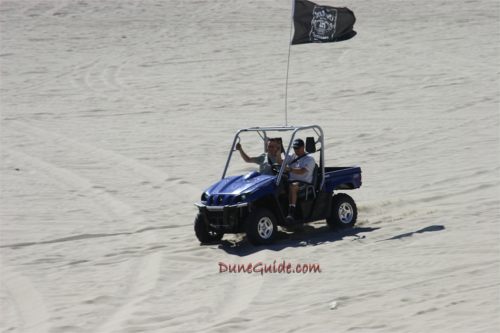
The Rhino is great for cruising around the flats. Very comfortable. Easy to start and maneuver.
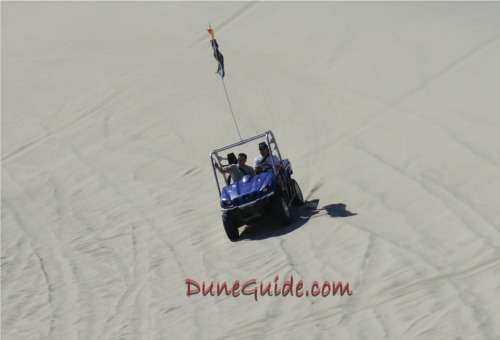
The Rhino felt a bit tippy on the side hills. Definitely Should only be attempted by users that are experienced at reading dunes.
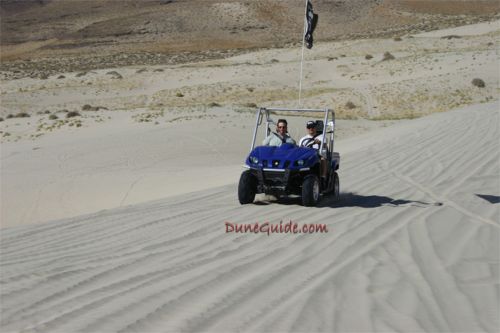
We tried to get it up to Super Bowl, but it just didn’t quitehave enough to get there with two guys in it.
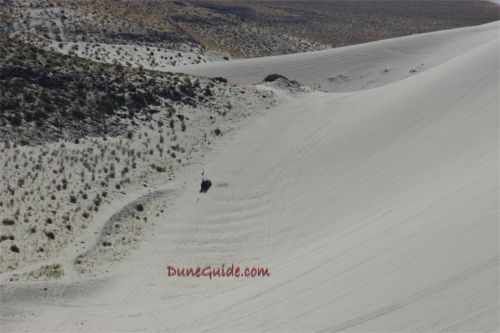
Although it fell just a bit short of making it up to SuperBowl, it was able to climb out of Toyota Gulch (near the Wall).
Conclusions:
Right out of the box, the Yamaha Rhino 660 is very capable. It has decent power and suspension. If you are a trail rider, or just want to cruise down to the vendors or your friends camp, the Rhino is a great vehicle. It is easy to drive for the novice, but fast enough for an experienced rider to still have fun. And since you can take a friend with you,it is a great way for newbies to see the dunes and learn how to drive from a more experienced rider.
The Rhino surprised us in what it could do in the dunes, but also concerned us at the same time. If you are not an experienced duner, we could see how you could get in over your head pretty quick out in the dunes. In our opinion, if you want to hit the dunes hard, there are a few things that could be done to make it a safer and more capable vehicle.
-
Rhino Suspension: the Rhino comes with fully independent four-wheel suspension: Double-wishbones front and rear deliver 7.3 inches of wheel travel and 12.1 inches of ground clearance. Decent for easy trail rides, but with stock-width a-arms, it feels like it could tip on side hills, or run out of suspension going through the whoops or hitting a witches eye. So if you are serious about taking it for more serious dune rides, either invest in some aftermarket suspension, or know the vehicle’s limits. In stock form, the Rhino has a 75″ wheelbase, and is 54.5″ wide.
-
Seat Belts: The stock seat belts won’t do well enough in a roll-over. To keep driver and passenger in the vehicle, we’d recommend a set of 4 point harness restraints. The stock belts can also be pretty annoying when they lock in place and won’t seem to unlock without releasing them.
-
Rhino Roll Bar/Cage: If you are just using your Rhino to cruise the flats, you are most likely good to go. It is very easy to get in and out, and the likelihood of a rollover is slim. But out in the dunes, we would be concerned with the strength of the roll bar and the openness in the doorway. In a rollover, it would be human nature to try to stop the rollover by sticking your foot out. In stock form, there is nothing to prevent you from doing this. A door, net or additional bar is necessary to keep your feet in the more protected cab.
-
More Power: What true dune nut could leave a stock engine alone? In stock form the Rhino has:
- 660cc, 4-stroke single, liquid-cooled w/fan, 5-valve SOHC
- Bore x Stroke – 100mm x 84mm
- Compression Ratio – 9.1:1
Adding more power to your Rhino can always be used to get you up to places the stock engine can’t get to now (e.g. Super Bowl, the top of Sand Mountain or racing up Oldsmobile Hill). There are options to swap out the CDI box (changes rev-limiter) that makes the timing curve a bit more aggressive. There are also air filters, exhaust and jetting that will help. A few companies have big bore & stroker kits, and we’ve even seen a few turbos and blowers.
New for 2007 Yamaha Rhino models:
-
All of the Rhinos now come with digital dash and fuel gauge.
-
Silver SE – Pre-load adjustable piggy-back shocks, molded roof, aluminum wheels.
New for 2008 Yamaha Rhino 700 EFI models:
-
All-new 686cc engine puts out plenty of broadband power. New four-valve head with 9.2:1 compression and forged piston bumps power and efficiency.
-
Electronic fuel injection ensures peak performance in nearly all conditions and elevations, along with instantaneous cold starts.
-
Tough, rotomolded doors keep mud, water and dirt on the trail where they belong.
-
New four-wheel disc brakes provide unsurpassed stopping power, and a new parking brake is super convenient.
-
Cool, comfortable new steering wheel and new passenger grab handles.
-
Now with two cup holders for even greater creature comfort.
-
New underhood tool-free air filter is a snap to service.
-
New Stainless Steel Exhaust with Spherical joints
-
New front differential
-
Bigger CV Joints and Axles
-
Larger Radiator and Fan
-
New Brake Pad Material – Eliminates Squeaks
-
CVT filter has been redesigned
-
Exhaust pipe is supported better to greatly reduce rattles

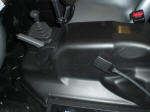
Shifter, new Parking Brake and Passenger Grab Handle
-
2008 Yamaha Rhino Side x Side models – Overview
-
Rhino 700 FI Auto. 4×4 Ducks Unlimited Edition – MSRP $11,499
-
Rhino 700 FI Auto. 4×4 Sport Edition – MSRP $12,099
-
Rhino 700 FI Auto. 4×4 SE Steel Blue – MSRP $11,149
-
Rhino 700 FI Auto. 4×4 SE Midnight Armor – MSRP $11,999
-
Rhino 700 FI Auto. 4×4 – MSRP $10,499 – $10,949
A note about fuel injection:
In 2004-2007 Rhinos, when you make changes to your exhaust and intake, you would need to make changes to your carburetor by “jetting” it and also change out your CDI to allow higher speed.
Since the 2008 Yamaha Rhino 700 is fuel injected (EFI), you will need a fuel controller if you want to add an aftermarket pipe and/or intake. In simple terms, a fuel controller does to fuel injection what jetting does to a carburetor. Dynojet will have a Power Commander III (see picture below) available in early 2008 and expect aftermarket exhaust manufacturers to also come out with customized fuel controllers for their products. Expect Dobeck and Dynatek to also have controllers for the 2008 Rhino.
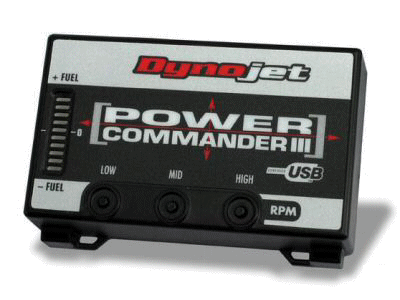
Why do you need a fuel controller?
The fuel injected engine on the Rhino uses a “map” that is built into the ECU to decide how much fuel to deliver at different points of the RPM curve. Various sensors on different systems allow the curve/map to be shifted up or down (richer or leaner) to compensate for altitude and air changes. These sensors do not really change the shape of the curve they just move it up and down a small amount.
Even if the fuel curve was perfect on a stock Rhino, once you have altered the airflow through the engine (by changing the exhaust, intake, etc.) the table that the ECU uses to deliver the correct amount of fuel no longer matches the altered levels of airflow at different parts of the RPM range. One of the things to keep in mind is that not all modifications increase airflow throughout the RPM range. Often it is necessary to lean out certain areas of a fuel curve for peak output.If you have made performance improvements to your 2008 Rhino, it will not run right until add a fuel controller so you can change air/fuel ratio to match the new modifications.
Basically if you modify the engine in any way you will need a fuel controller in order for the engine to run properly.
Choosing the right fuel controller:
Well, how much money do you want to spend? The least expensive unit is typically one made by Dobeck. The Dobeck unit will not let you take away fuel only add. Dobeck fuel controllers are most commonly offered with custom mapping for a specific pipe. Dynatek makes a controller that adds the ability to take away fuel not just add. Dynojet Power Commander is the top of the line fuel controller for ATVs, motorcycles and UTVs. It not only allows you to give or take away fuel and it has other add-on features to control turbos or blowers.
About Yamaha Motor Corporation, U.S.A:
Yamaha Motor Corporation, U.S.A. (YMUS), a leader in the motorsports market, makes the toughest, most capable and versatile ATV and Side-by-Side vehicles. The companys ever-expanding product offerings also include motorcycles, outboard motors, personal watercraft, snowmobiles, boats, outdoor power equipment, race kart engines, accessories, apparel and much more. YMUS products are sold through a nationwide network of more than 4,000 dealers in the United States.
Headquartered in Cypress, Calif., since its incorporation in 1977, YMUS also has facilities in Wisconsin and Georgia, as well as factory operations in Tennessee and Georgia. For more information on Yamaha, visit www.yamaha-motor.com.

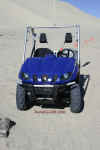
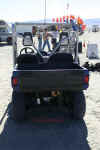





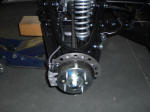
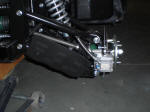

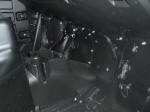

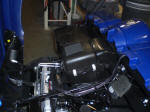
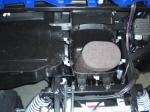
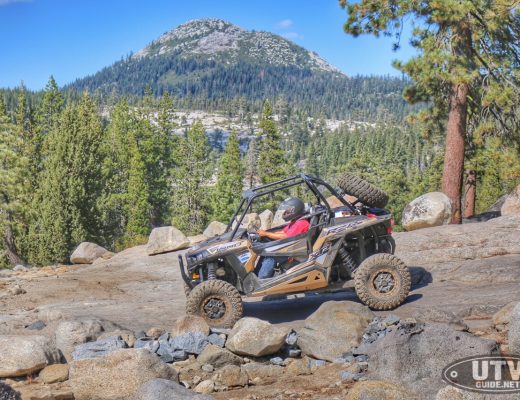
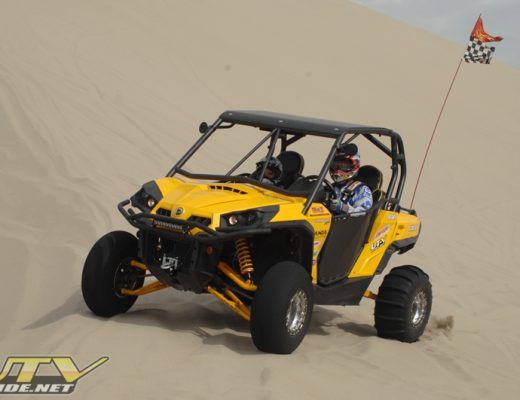
No Comments